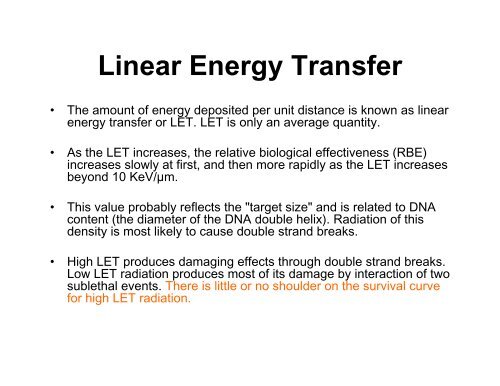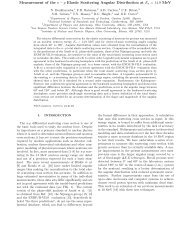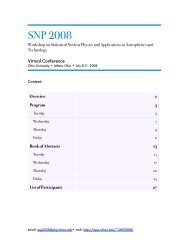Module 6 Survival curves
Module 6 Survival curves
Module 6 Survival curves
- No tags were found...
You also want an ePaper? Increase the reach of your titles
YUMPU automatically turns print PDFs into web optimized ePapers that Google loves.
Linear Energy Transfer• The amount of energy deposited per unit distance is known as linearenergy transfer or LET. LET is only an average quantity.• As the LET increases, the relative biological effectiveness (RBE)increases slowly at first, and then more rapidly as the LET increasesbeyond 10 KeV/µm.• This value probably reflects the "target size" and is related to DNAcontent (the diameter of the DNA double helix). Radiation of thisdensity is most likely to cause double strand breaks.• High LET produces damaging effects through double strand breaks.Low LET radiation produces most of its damage by interaction of twosublethal events. There is little or no shoulder on the survival curvefor high LET radiation.








